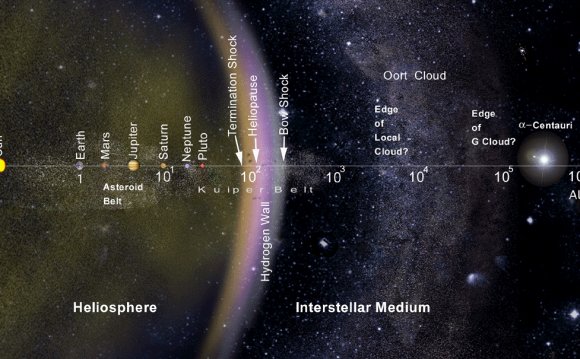
 Jupiter is the largest planet in the solar system.
Jupiter is the largest planet in the solar system.
Radius, diameter and circumference
Jupiter has a mean radius of 43, 440.7 miles (69, 911 kilometers), about a tenth that of the sun. However, its rapid rotation — it spins once every 9.8 hours — causes it to bulge at the equator, where the diameter is 88, 846 miles (142, 984 km). In contrast, the diameter at the poles is only 83, 082 miles (133, 708 km). This stretched shape is known as an oblate spheroid.
If you were to walk around the equator of Jupiter, you would travel 272, 946 miles (439, 264 km), over 10 times the distance around Earth's center line.
Because Jupiter is made of gas, mostly, its surface is considered uniform. As such, it lacks high and low points — mountains and valleys — such as those found on rocky terrestrial planets.
Density, mass and volume
Known as a gas giant, Jupiter is composed primarily of hydrogen and helium. It weighs in at 1.9 x 1027 kilograms. Although it is significantly more massive than Earth, it is only a fifth as dense, at 1, 326g/cm3, because it is made of gas rather than rock.
The volume of Jupiter is 1, 431, 281, 810, 739, 360 cubic kilometers, 1, 321 times that of Earth.
The surface area of this enormous planet is 23, 713, 907, 537 square miles, or 6.1419x1010 square kilometers, 120 times that of our planet.
YOU MIGHT ALSO LIKE












